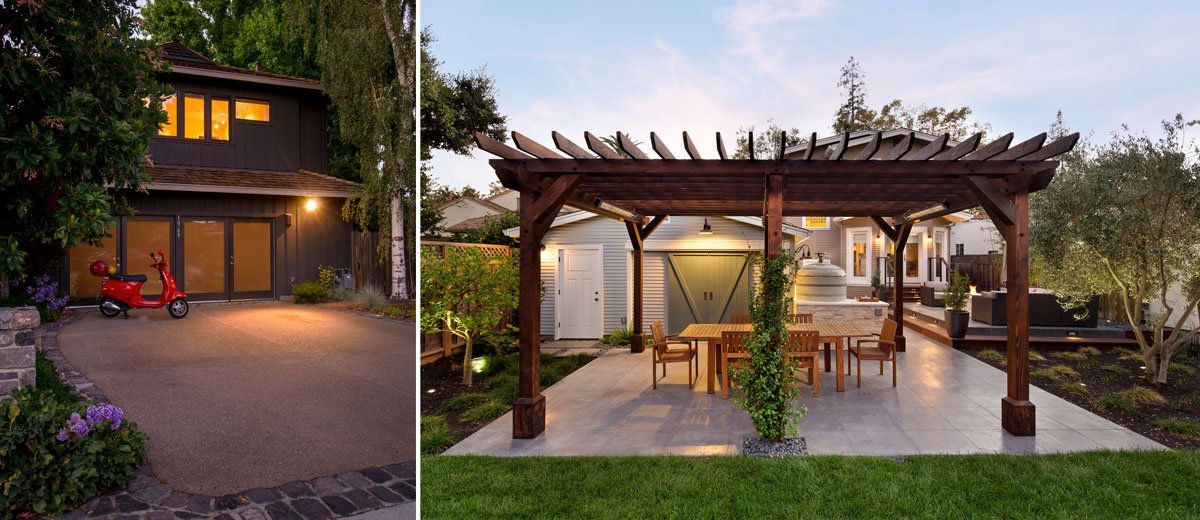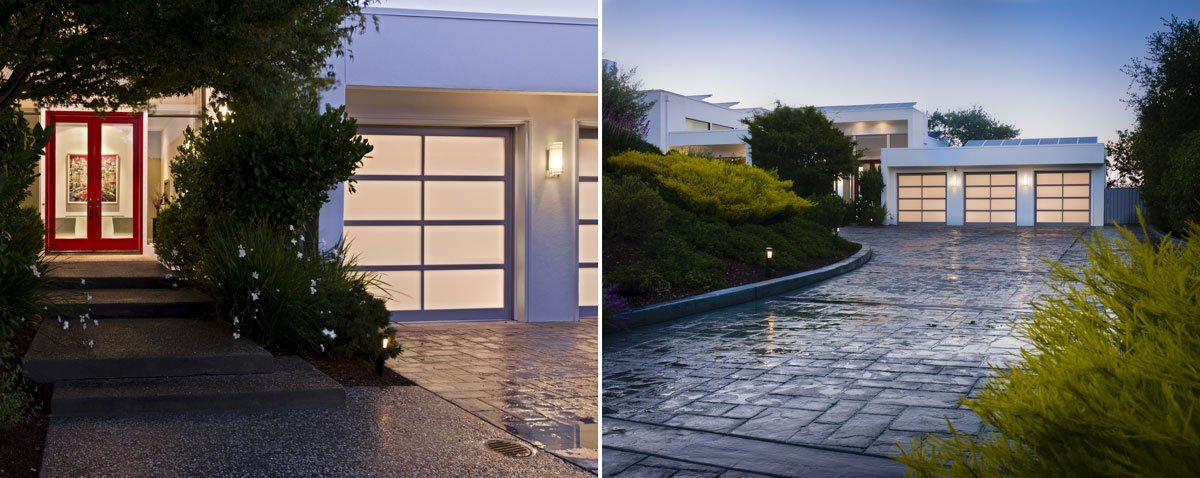Making a Statement With Garage Doors
We’ve all heard the saying, “necessity is the mother of invention” and this definitely holds true for the residential garage. Well over a century ago when one of the primary modes of transportation was horse and buggy, many homes had carriage houses. These were outbuildings situated behind homes that served as shelter for the horses and carriage. When mass production made the motorized vehicle (the “horseless carriage”) popular in the 1920s, the garage replaced the carriage house.
As alleys behind homes were not constructed in the new post-war and 1950s and 1960s neighborhoods, garages eventually moved to the front of the home, often becoming a prominent (and sometimes not very attractive) architectural feature. Today, garage doors offer homeowners the opportunity to add visual interest to their homes, especially if their garage is a primary feature.

Garage doors have come a long way since the cumbersome single panel, manual, swing-up or sliding door. Today, they come in a myriad of materials, including wood, steel, vinyl, glass, and fiberglass, and the styles include contemporary, traditional, modern, and even the historic “carriage house” style. The almost limitless options allow homeowners to design a garage door that makes an architectural statement in keeping with the aesthetic of their residence.
Says Harrell CEO (and occasional Senior Designer) Lisa Sten, “Garage doors have such potential but are underused as a residential design feature. It’s imperative to take a holistic approach – a garage door should be a cohesive, rather than a standalone design statement.”
Lisa suggests that when choosing a new garage door for your home, you should consider:
- Curb appeal
- Cohesive design
- Functionality
- Energy-savings
- Safety
- Privacy and light
- Material durability
When it comes to materials, wood doors are beautiful but take considerable time and money to maintain. Embossed steel or fiberglass doors with a wood grain offer a similar aesthetic and require much less maintenance. Opting for an insulated door will help keep your garage cool in the summer, and warmer in the winter, which is a benefit, especially if the garage is attached to your home. Be sure to choose windows wisely if privacy (or safety) is a concern. Frosted windows allow light inside while concealing the contents in your garage. Be sure to get a door with heavy-duty springs, especially if you will be using your garage door frequently. Lisa also recommends that homeowners purchase a new garage door opener and have both the opener and the door professionally installed.

There are a number of other elements to integrate with your new garage door in order to coordinate with the design aesthetic of your home, including:
- Lighted house numbers
- Exterior light fixtures
- Trellis structure for plantings and vines above the garage doors
- Planters or greenery on sides of doors
- Complementary side gates and fencing
- Coordinating person door to the garage
- Paint or stain, and using accents colors
“Painting your garage door a contrasting or bold color makes a visual statement,” Lisa says. “In my opinion, darker colors tend to recede while lighter colors actually pop out more. If you prefer to have your garage door ‘disappear,’ paint it the same color as your house.”
Whatever the style of your home, the right garage door can make an impact, creating curb appeal as well as increasing the functionality of your home.
Woman-founded and 100% Employee-Owned, Harrell Design + Build has been creating distinctive homes in Silicon Valley and on the mid-Peninsula since 1985. If you are considering transforming your space, allow our award-winning Design + Build team to help you create the home of your dreams. Reach out to us to set up your design consultation or sign up for one of our frequent and informative educational workshops.





